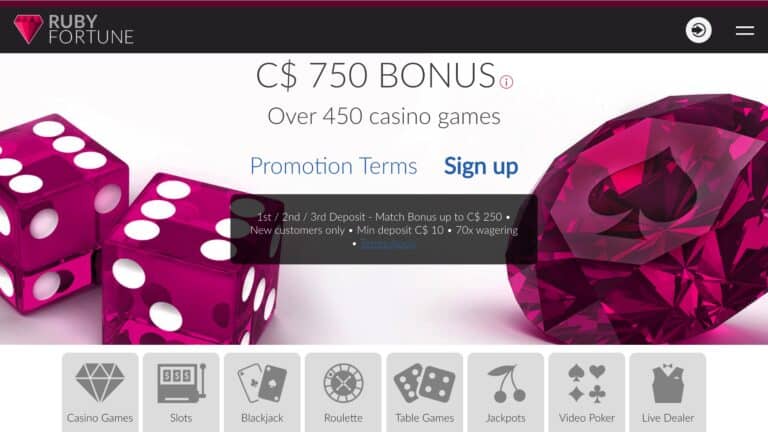Understanding fold equity in online poker is crucial for making profitable decisions, especially in today's competitive landscape where players are increasingly savvy and aggressive; mastering this concept can significantly boost your win rate.
What is Fold Equity?
Fold equity, in essence, is the probability that your opponent will fold when faced with a bet or raise, thereby awarding you the pot without needing to have the best hand at showdown. It's a cornerstone of aggressive poker strategy, particularly valuable in no-limit Texas Hold'em and Pot-Limit Omaha. Unlike showdown value, which relies on having the best hand to win, fold equity allows you to win by forcing weaker hands to fold. This concept becomes increasingly important as you move beyond simply playing premium starting hands and begin to exploit opponent tendencies and board textures.
To illustrate, imagine you are in a heads-up game on the river. The board is heavily draw-completed, and you hold a marginal hand that likely loses at showdown. However, by making a well-sized bet, you can represent a strong hand and induce your opponent to fold a hand that might actually be better than yours. This is fold equity in action – winning the pot not because you have the best hand, but because your bet convinced your opponent otherwise.
Why Fold Equity Matters in Online Poker
In online poker, where reads are primarily based on statistics and betting patterns rather than physical tells, fold equity becomes even more critical. Online environments often feature faster-paced games and multi-tabling, making efficient and aggressive strategies highly rewarding. Here's why mastering fold equity is essential for online poker success:
- Maximizing Profitability: Fold equity allows you to extract value from situations where your hand might not be strong enough to win at showdown. By successfully bluffing or semi-bluffing, you can increase your overall win rate and profitability.
- Exploiting Opponent Weakness: Recognizing and exploiting opponents who are overly cautious or fold too frequently is a key aspect of profitable poker. Fold equity is the tool you use to punish these players and capitalize on their tendencies.
- Controlling the Narrative: Aggressive betting, fueled by fold equity considerations, allows you to dictate the flow of the hand and put pressure on your opponents. This control can be invaluable in navigating complex situations and extracting maximum value.
- Balancing Your Ranges: Incorporating bluffs and semi-bluffs into your betting ranges, based on fold equity, makes you less predictable and harder to play against. This balance is crucial for long-term success in online poker.
- Winning Without Showdown: In many poker games, especially tournaments, avoiding showdowns and winning pots through aggression is vital for survival and chip accumulation. Fold equity is your primary weapon in these scenarios.
Factors Influencing Fold Equity
Several factors influence the amount of fold equity you can expect in any given situation. Understanding these factors is crucial for accurately assessing fold equity and making profitable betting decisions:
- Opponent Tendencies: This is arguably the most critical factor. Is your opponent generally tight or loose? Passive or aggressive? Do they tend to over-fold to aggression, or are they calling stations? Profiling your opponents and identifying their folding frequencies is paramount. For instance, against a very tight player, even a small bet might induce a fold, granting you significant fold equity. Conversely, against a loose-passive player, bluffing might be less effective, and your fold equity will diminish.
- Bet Sizing: Your bet size directly impacts fold equity. Larger bets generally induce folds more often than smaller bets, but they also carry more risk. Finding the optimal bet size involves balancing the increased fold equity of a larger bet with the reduced risk of a smaller bet. Consider the pot size, your stack size, and your opponent's perceived hand strength when choosing your bet size. A well-calculated bet size maximizes your chances of either winning the pot outright (through fold equity) or getting called when you have a strong hand.
- Board Texture: The community cards on the board significantly influence fold equity. Certain board textures are more conducive to bluffing than others. For example, a board with multiple suited cards or connected cards increases the likelihood of draws being present. Aggression on such boards can be highly effective as you represent these potential draws, increasing your fold equity against opponents who might not have realized their draw or hold weaker made hands. Dry boards, on the other hand, offer less fold equity as there are fewer draws to represent.
- Your Perceived Range: How your opponents perceive your playing style and range of hands significantly impacts your fold equity. If you've been playing tight and only showing down strong hands, your bluffs will be more credible and generate more fold equity. Conversely, if you've been playing loosely and bluffing frequently, your opponents will be less likely to fold, and your fold equity will decrease. Maintaining a balanced and unpredictable image is key to maximizing fold equity over the long run.
- Position: Positional advantage greatly enhances fold equity. Playing in position, especially on later streets, allows you to act last and gather more information before making your decisions. This positional awareness enables you to make more informed bluffs and extract more fold equity compared to playing out of position. For example, bluffing on the river in position is generally more effective than bluffing out of position.
- Street of Play: Fold equity dynamics change as the hand progresses through different streets. Generally, fold equity is higher on earlier streets (preflop and flop) and tends to decrease on later streets (turn and river). This is because as more cards are revealed, players' hand ranges become more defined, and they are less likely to fold strong made hands. However, specific board textures and opponent tendencies can alter this general trend.
Calculating Fold Equity: A Practical Approach
While there isn't a precise mathematical formula to calculate fold equity in real-time poker situations due to the numerous variables involved, you can develop a practical approach to estimate it and incorporate it into your decision-making process. This approach involves combining observation, logical reasoning, and basic probability concepts:
1. Opponent Profiling and Observation:
- Folding Frequency: Pay close attention to how often your opponent folds to bets and raises in various situations. Use poker tracking software if available to gather statistical data on their folding frequencies. Even without software, observe their tendencies over a session. Are they quick to fold to aggression, or do they tend to call down frequently?
- Hand Reading: Based on their preflop and postflop actions, try to narrow down your opponent's likely range of hands. What types of hands are they likely to fold in this specific situation? What hands are they likely to call with?
- Past History: Consider your past interactions with this opponent. Have they shown a tendency to over-fold or under-fold against you specifically? Exploit any established patterns in their play.
2. Board Texture Analysis:
- Draw Potential: Evaluate the board for draw possibilities (straights, flushes). Boards with many draws offer more bluffing opportunities and thus higher potential fold equity.
- Paired Boards: Paired boards can sometimes reduce fold equity as opponents with trips or full houses become less likely to fold. However, they can also present bluffing opportunities if you represent a full house when your opponent might not have one.
- High Card vs. Low Card Boards: High-card boards can be more conducive to bluffing as they are more likely to connect with your perceived range, increasing fold equity. Low-card boards might offer less fold equity, especially against opponents who tend to call down with any pair.
3. Bet Sizing Considerations:
- Minimum Bet for Fold: Estimate the minimum bet size required to induce a fold from your opponent, considering their tendencies and the situation. Avoid over-betting unnecessarily if a smaller bet can achieve the same result.
- Risk vs. Reward: Calculate the risk-reward ratio of your bluff. Compare the amount you stand to lose if your bluff fails (your bet size) to the amount you stand to gain if it succeeds (the pot size plus your bet). Ensure the potential reward justifies the risk, considering your estimated fold equity.
4. Range Balancing and Deception:
- Bluffing Frequency: Don't bluff too frequently, or you'll become easily exploitable. Balance your bluffs with value bets to maintain credibility and maximize fold equity in the long run. A general guideline is to bluff approximately one-third of the time in certain river situations, but this is highly dependent on context and opponent tendencies.
- Polarized Ranges: Construct polarized betting ranges, especially on later streets, where you bet either very strong hands for value or complete bluffs. This makes your betting ranges harder to read and increases your fold equity.
Examples of Fold Equity in Action
To solidify your understanding, let's examine specific examples of fold equity in online poker scenarios:
Example 1: River Bluff in a Tournament
Game: No-Limit Texas Hold'em Tournament, late stages, blinds are high.
Scenario: You are on the button with ♥J♥9. The board is ♣A♤K♤5♥3. The pot is 15 big blinds (BB). Your opponent in the big blind checks to you on the river.
Analysis: The board is very dry, with no obvious draws completed on the river. Your hand, Jack-high, has virtually no showdown value. However, in a tournament setting with escalating blinds, stealing pots is crucial. Your opponent checking on the river could indicate a weak made hand or a missed draw. By betting, you can represent a strong Ace-high hand or even a full house, inducing your opponent to fold hands like a smaller Ace, King-high, or Queen-high.
Decision: Make a bet of 7-10 BB. This bet size is large enough to apply pressure and maximize fold equity, but not so large that it's overly risky if your bluff is called. Against a reasonably tight opponent, this bluff is likely to succeed, awarding you a valuable pot in a tournament.
Example 2: Semi-Bluff on the Flop in a Cash Game
Game: No-Limit Texas Hold'em Cash Game, online, low stakes.
Scenario: You are in middle position with ♣7♣6. The flop comes ♥8♥9♤2. You hold an open-ended straight draw. There are two opponents in the hand, and the pot is 5 big blinds (BB).
Analysis: You have a strong drawing hand with significant potential to improve to a straight on the turn or river. While your hand is currently weak, you have both showdown value if you hit your draw and fold equity if your opponents fold. By betting, you can accomplish several objectives: you can win the pot outright if your opponents fold (fold equity), you can build a larger pot if you hit your draw, and you can gain information about your opponents' hand strength based on their reactions to your bet.
Decision: Make a continuation bet of 3-4 BB. This is a semi-bluff, leveraging your draw to gain fold equity and set up a potentially larger pot if you improve. Against weaker opponents, this bet is likely to induce folds, while against stronger opponents, you still have a good chance to improve and win a larger pot.
Example 3: Exploiting Over-Folding on the Turn
Game: Pot-Limit Omaha Cash Game, online, mid-stakes.
Scenario: You are in position on the turn with ♥A♥K♤Q♤J (top pair, top kicker, nut flush draw). The board is ♣T♣9♤5♥6. Your opponent checks to you on the turn. The pot is 20 big blinds (BB).
Analysis: You have a very strong hand with both current value (top pair) and significant drawing potential (nut flush draw). Your opponent checking on the turn might indicate a weaker made hand or a missed draw. In Pot-Limit Omaha, players are often more inclined to call down with made hands, but you can still generate fold equity by representing a stronger hand and targeting opponents who are overly cautious on later streets.
Decision: Make a pot-sized bet of 20 BB. This aggressive bet size maximizes value if your opponent calls with a weaker hand and also generates significant fold equity against opponents who might be inclined to fold to turn aggression, especially in Pot-Limit Omaha where draws are prevalent. Even if called, you have excellent equity with your nut flush draw and top pair.
Common Mistakes to Avoid with Fold Equity
While fold equity is a powerful tool, it's essential to use it judiciously and avoid common pitfalls that can lead to costly mistakes:
- Bluffing Too Much: Over-bluffing is a common mistake, especially for inexperienced players. If you bluff too frequently without sufficient fold equity or a balanced range, you will become predictable and easily exploitable. Remember to value bet your strong hands and only bluff in strategic situations where you have a reasonable expectation of inducing a fold.
- Ignoring Opponent Tendencies: Failing to adjust your fold equity estimations based on opponent tendencies is a significant error. Bluffing relentlessly against a calling station will be highly unprofitable. Conversely, not bluffing enough against a tight, folding-prone opponent is leaving value on the table. Always tailor your strategy to the specific opponents you are facing.
- Overlooking Showdown Value: Sometimes, players become overly focused on fold equity and miss opportunities to value bet hands that have showdown value. If your hand is likely to win at showdown, even if it's marginal, prioritize value betting over bluffing. Extracting value from weaker hands is a fundamental aspect of profitable poker.
- Incorrect Bet Sizing for Bluffs: Using inappropriate bet sizes for bluffs can significantly reduce their effectiveness. Betting too small might not induce folds, while betting too large might be unnecessarily risky and less believable. Choose bet sizes that are proportionate to the pot and the situation, maximizing fold equity without over-committing.
- Bluffing in Multi-Way Pots: Fold equity diminishes significantly in multi-way pots. The more opponents in the hand, the less likely any single opponent is to fold. Bluffing in multi-way pots is generally less profitable and should be approached with extreme caution. Focus your bluffs in heads-up or three-way pots where fold equity is more substantial.
Advanced Fold Equity Concepts
For experienced players looking to refine their understanding of fold equity, consider these advanced concepts:
- Range Merging: This advanced technique involves blurring the lines between your value betting and bluffing ranges. By sometimes value betting weaker hands that could be bluffs and sometimes bluffing with hands that could have showdown value, you make your ranges incredibly difficult to read and maximize your overall fold equity.
- Expected Value (EV) Calculations with Fold Equity: While complex, attempting to estimate the expected value of a bluff, considering fold equity, can be highly beneficial. This involves weighing the probability of your bluff succeeding (fold equity) against the probability of it failing and calculating the overall profitability of the play.
- Leveling and Meta-Game Considerations: In higher-stakes games, understanding your opponents' understanding of fold equity and adjusting your strategy accordingly becomes crucial. This involves "leveling" – thinking about what your opponent thinks you will do, and then exploiting that perception. For example, against an opponent who knows you are bluffing frequently, you might reduce your bluffing frequency and focus more on value betting.
Conclusion: Mastering Fold Equity for Online Poker Dominance
Fold equity is not merely a bluffing concept; it's a fundamental principle that underpins aggressive and profitable poker strategy. By mastering fold equity, you transition from passively waiting for strong hands to proactively creating winning opportunities. In the dynamic world of online poker, where aggression and adaptability are paramount, a deep understanding of fold equity is not just an advantage – it's a necessity for sustained success. Embrace the power of fold equity, refine your skills, and elevate your online poker game to new heights. Remember, the pots you win through well-calculated bluffs, leveraging fold equity, are just as valuable as those won at showdown with the best hand, and often, they are even more rewarding in the long run.
External Resources:



